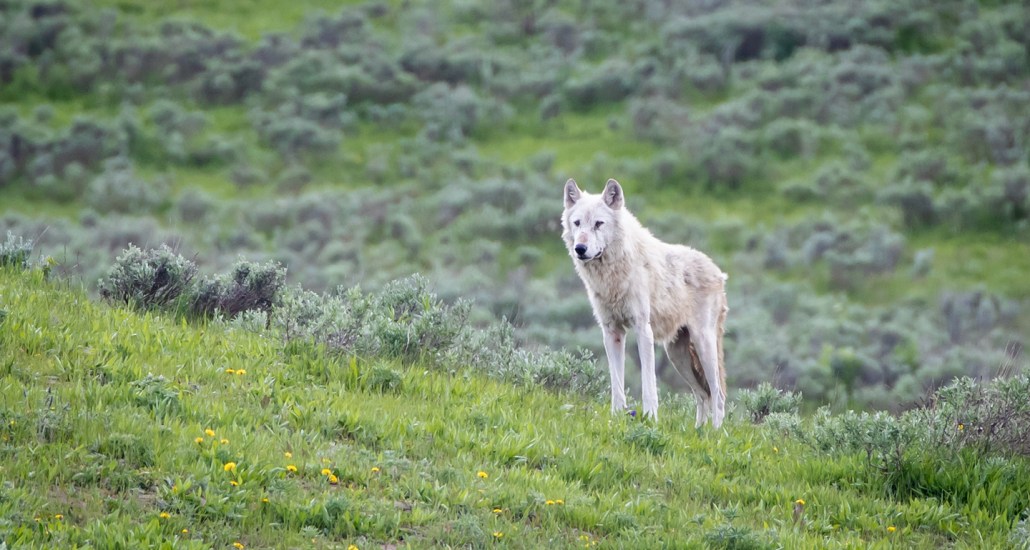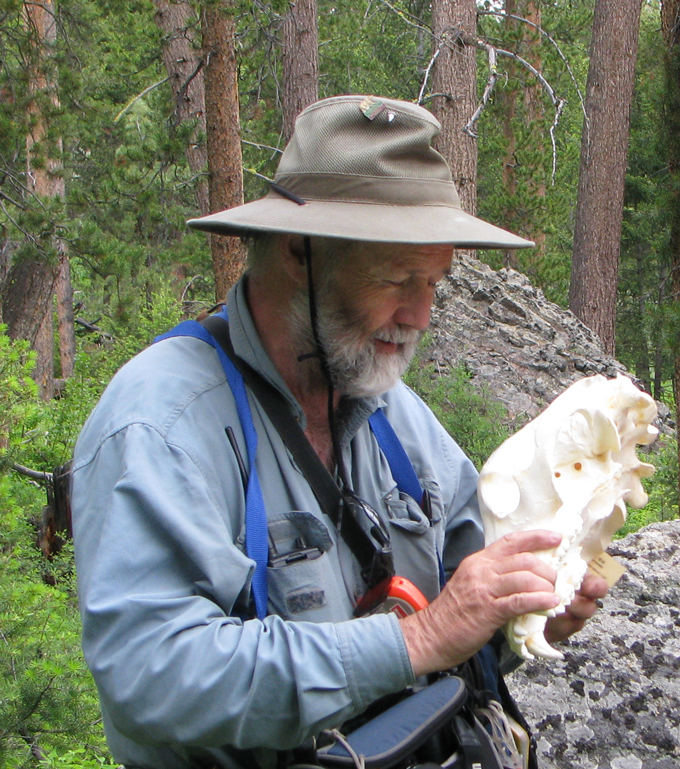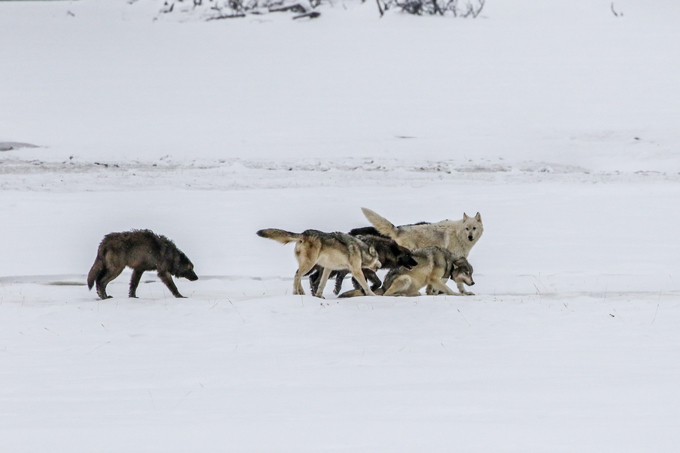How Yellowstone wolves got their own Ancestry.com page
Since reintroduction, 25 years of passionate watching has chronicled life, death and puppies

One of the wolves popular among visitors to Yellowstone National Park is the alpha female of the Wapiti Lake pack (photographed in June 2020). A small irritation in one eye may come from a scratch from this year’s puppies.
Julie Argyle/Wild Love Images
Wildlife ecologist Jim Halfpenny was standing by the stone arch at the north entrance to Yellowstone National Park on January 12, 1995, when horse trailers eased through carrying the first wild gray wolves to enter the park in about 60 years. Delivered from Canada, these wolves were the beginning of a historic attempt to complete and restore the park’s ecosystem by reintroducing a species wiped out decades before (SN: 3/17/19).
He remembers that the schoolchildren who had gathered were disappointed to see only trailers, with not even a glimpse of fur. However, Halfpenny and the other elated adults “were up there howling our heads off,” he says.
Not everyone in the region was pro-wolf, though. Seven of the 41 genetic founders of Yellowstone’s Canis lupus population introduced that year and the next ended up being shot illegally.
Deep cultural memory entangles wolves and wilderness in all their terror and majesty. In Europe’s bouts of bubonic plague, “there would be people standing on the fortress walls watching their parents being eaten by wolves because they had died and been thrown out,” Halfpenny says. Yet wolves also tug heartstrings as cousins of humankind’s beloved dogs. In surveys of the Yellowstone’s winter visitors, “the No. 1 thing they want to see is the wolf,” he says. “In the summer, it’s bear, then the wolf.”

At the time of the reintroduction, Halfpenny was teaching about wolves and other wildlife for his own company, A Naturalist’s World, while still working with the University of Colorado’s Institute of Arctic and Alpine Research in Boulder. From the beginning, as he recorded the introduced wolves’ pairings, puppies and the rise and fall of packs, he wished Yellowstone visitors and other passionate wolf fans also could follow the story lines. Then it hit him: “People have Ancestry.” The genealogy website Ancestry.com, he thought, could introduce wolves as the first nonhuman section.
So that’s what he and four dedicated coworkers eventually created in four intense months of data wrangling. A single chart of pack genealogy with biographical sketches could take weeks. It’s still being updated, and anyone can find a wolf’s history at wolfgenes.info and (scrolling down the page) can request an invitation to get a free account to view the wolf family trees on the Ancestry.com website. The Yellowstone Wolf Genealogy site’s media gallery includes images of many of the wolves along with life stories and family trees. Halfpenny and two coauthors also present that data, and those stories, in a 2020 book celebrating the 25th anniversary of howling as the trailers arrived.
A Canadian-born female known as 5Fg, for instance, was the first wolf carried out of the trailers in Yellowstone and set free into the wild in March. The next year she lost her mate and their four recently born pups in an attack by a rival pack. The raiders hurt her, too, but another survivor helped feed her, and she recovered to found a new pack with him. The Canadian female 9Fb also lost her first mate (illegally shot) but was accepted, with her eight pups, by another transplanted Canadian, a rather young male. He often played with the pups, letting them sneak up and leaping to his feet only at the last moment.

One of these step-pups ranks among Halfpenny’s favorite wolves, 21Mb, the star of three National Geographic specials. “The biggest day for me,” Halfpenny says, came when 21Mb as a young adult decided to approach a pack that had just lost its alpha male (another illegal shooting). An edgy standoff dragged on for hours.
Eventually one female checked him out, and “finally she put one paw on his back,” Halfpenny says. After that turning point, he was on his way to acceptance and became the alpha wolf. His biography describes him as a wolf that humans can admire: “As far as we know, he never lost a fight, and he never killed a vanquished wolf from an enemy pack.”
For new visitors who want a glimpse of wolf life themselves, Halfpenny has some counter-intuitive advice: Don’t watch for wolves. Watch for people. The longtime passionate wolf-watchers of Yellowstone gather just as night ends where they think wolves are likely to be. If all the spotting scopes are trained in one direction, “that’s a good sign.”





